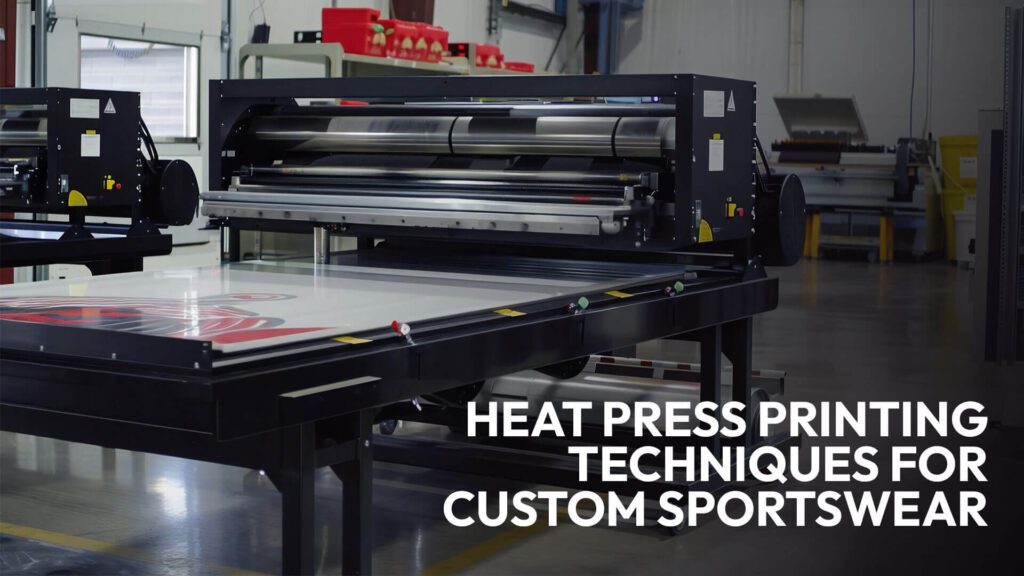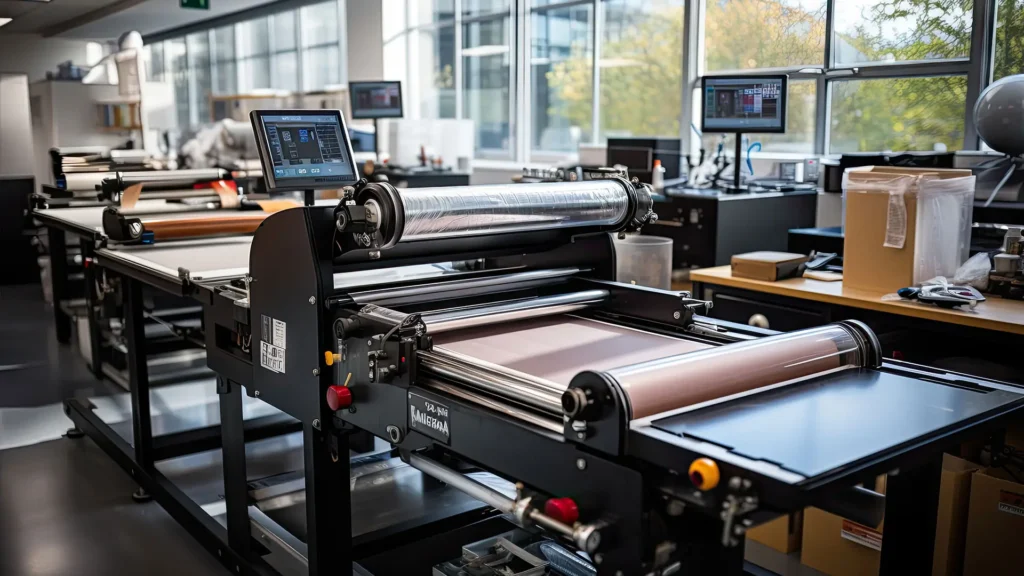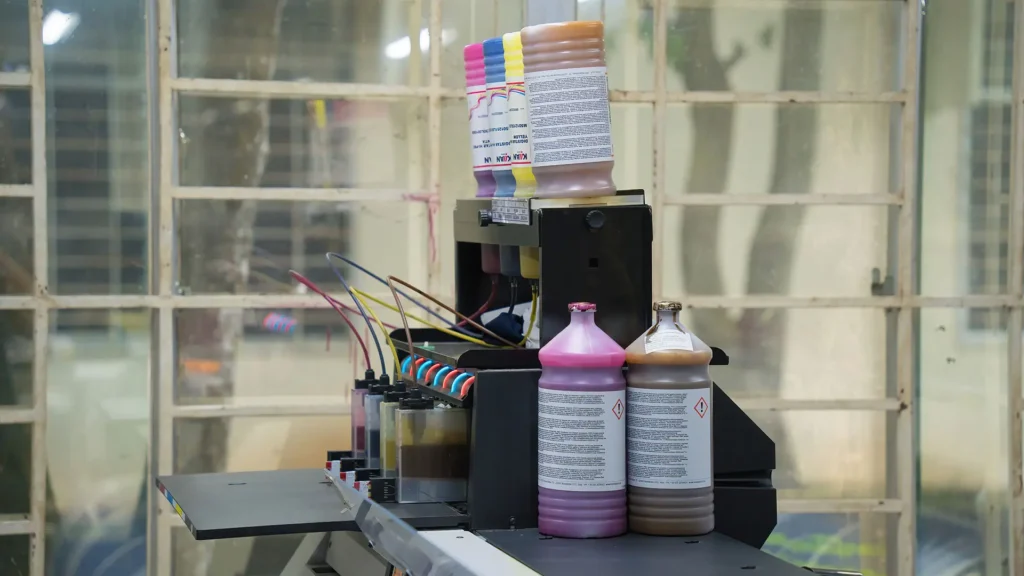Heat Press Printing Techniques for Custom Sportswear
Heat press printing has revolutionized the customization of sportswear, offering vibrant and durable designs that can withstand the rigors of athletic use. Custom sportswear is essential in the sports industry, providing teams and individuals with unique, professional-looking apparel. This article explores the various heat press printing techniques for custom sportswear, highlighting essential tools, step-by-step processes, advanced techniques, and best practices.
Heat press printing is a method of transferring designs onto fabric using heat and pressure. This technique involves placing a pre-cut vinyl or a printed transfer onto the fabric and applying heat and pressure to embed the design into the material. It is known for its efficiency and the high quality of the results, making it a popular choice for custom sportswear.
Heat press printing offers several benefits for custom sportswear. It provides versatile and durable designs suitable for various materials like polyester, spandex, and cotton blends. Ideal for both small and large batches, this method ensures high-quality, vibrant prints with quick setup and production times. Heat press printing is perfect for creating professional sportswear that can withstand the demands of athletic use, making it a top choice for teams and individuals.
For successful heat press printing on custom sportswear, you need essential tools and materials. A quality heat press machine, such as a clamshell, swing-away, or draw type, is crucial. Heat transfer vinyl (HTV), printable heat transfer paper, sublimation paper, and ink are necessary for creating vibrant designs. Design software like CorelDRAW and Adobe Illustrator, along with weeding tools and Teflon sheets, complete your toolkit, ensuring precise and professional results.
HTV is essential for creating custom designs. Available in various colors and finishes, it can be cut into intricate shapes and designs. Printable heat transfer paper is used for full-color prints and complex images, allowing for high-quality, detailed designs.
For sublimation printing, sublimation paper and ink are necessary. These materials are best suited for polyester fabrics and result in vibrant, long-lasting prints.
Weeding tools remove excess vinyl from around the design, ensuring clean and precise transfers. Teflon sheets protect the fabric and design during pressing, preventing scorch marks and ensuring even heat distribution.
The step-by-step heat press printing process involves several key stages. First, create your design using software like CorelDRAW or Adobe Illustrator. Next, cut the design from heat transfer vinyl (HTV) and weed out the excess material. Prepare the heat press machine by setting the appropriate temperature, pressure, and time. Preheat the garment to remove moisture and wrinkles, then position the design on the garment and cover it with a Teflon sheet. Apply heat and pressure according to the manufacturer’s instructions. Finally, remove the backing and ensure proper adhesion.
Using design software, create or import your design. Ensure it is the correct size and format for your heat press machine. Pay attention to the resolution and color accuracy to ensure high-quality prints.
Cut the design from HTV using a vinyl cutter. Weed the excess vinyl to leave only the desired design. This step requires precision to ensure all small details are correctly removed.
Set the machine to the appropriate temperature, pressure, and time based on the material and transfer type. Preheat the garment to remove moisture and wrinkles, which can affect the adhesion of the transfer.
Position the design on the garment and cover it with a Teflon sheet. Apply heat and pressure according to the manufacturer’s instructions. The right combination of temperature, pressure, and time is crucial for a successful transfer.
Remove the transfer paper or vinyl backing while warm or cool, depending on the material. Ensure proper adhesion by checking the edges and corners of the design. Allow the garment to cool completely before handling.
Create multi-color designs by layering different colors of HTV. Ensure proper alignment and adhesion for each layer. This technique allows for complex and colorful designs that stand out.
Incorporate special effects like glitter, foil, flock, reflective, and glow-in-the-dark vinyl to add unique elements to your designs. These materials can create eye-catching and distinctive custom sportswear.
Use sublimation printing for polyester sportswear. This technique embeds the design into the fabric, creating seamless and vibrant prints. Note the fabric type and color limitations, as sublimation works best on light-colored, polyester materials.
Choose suitable materials for different types of sportswear, including polyester, spandex, and cotton blends. Each fabric type may require different settings and techniques to achieve the best results.
Ensure your prints are durable and flexible, ideal for athletic use. Proper technique and high-quality materials are key to creating designs that last and move with the fabric without cracking or peeling.
Use appropriate heat and pressure settings, and follow washing instructions to maintain color vibrancy and prevent fading. Turn garments inside out and use mild detergents to extend the life of the prints.
Use stretchable HTV and proper techniques to print on stretchy fabrics like spandex, ensuring the design moves with the fabric without cracking. Adjust the pressure and temperature settings to accommodate the stretchiness of the material.
Common challenges in heat press printing include issues with temperature and pressure settings, poor adhesion, and handling complex designs. To overcome these, always follow manufacturer guidelines and perform test presses to find optimal settings. Ensure proper weeding and cooling times to prevent peeling. Use high-quality vinyl and tools for intricate designs, and take extra care when weeding fine details. To avoid scorching and heat marks, use Teflon sheets and adjust temperature settings accordingly. These solutions help achieve consistent, high-quality results.
Incorrect settings can lead to poor adhesion or damage. Always follow manufacturer guidelines and perform test presses to find the optimal settings for your materials and designs.
Ensure proper weeding, use the correct settings, and allow adequate cooling time to prevent peeling. If problems persist, review your technique and consider adjusting your equipment.
Use high-quality vinyl and cutting tools; take extra care when weeding intricate designs. Patience and precision are crucial for achieving professional-looking results.
Use Teflon sheets and adjust temperature settings to avoid scorching and heat marks. Preheating the garment and using protective layers can help prevent damage to delicate fabrics.
Heat press printing offers a versatile and efficient method for creating custom sportswear. By understanding the techniques, tools, and best practices, you can produce high-quality, durable designs that meet the demands of athletic use. As technology advances, the possibilities for customization continue to grow, making heat press printing a valuable tool for teams, athletes, and enthusiasts alike. With the right knowledge and equipment, you can achieve professional results that enhance the appearance and performance of custom sportswear.




